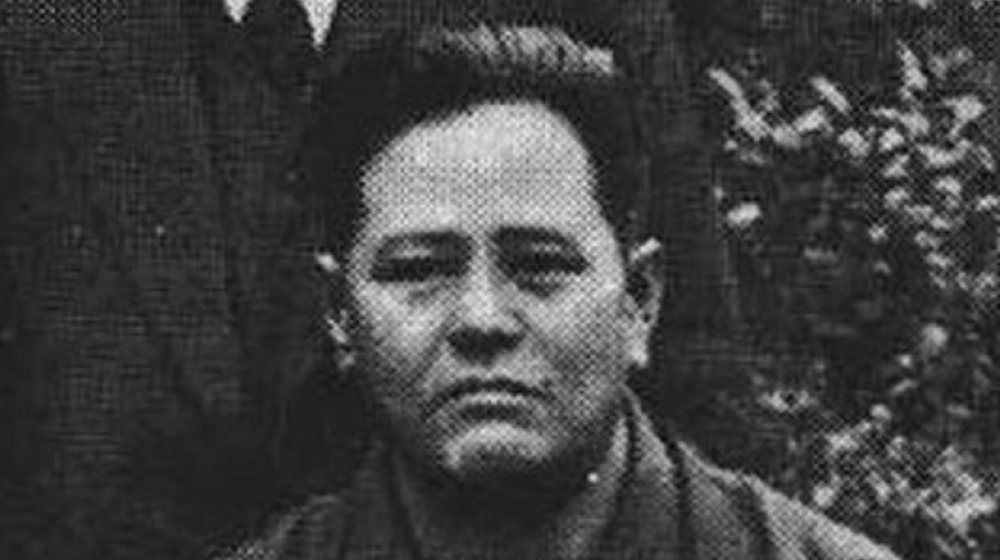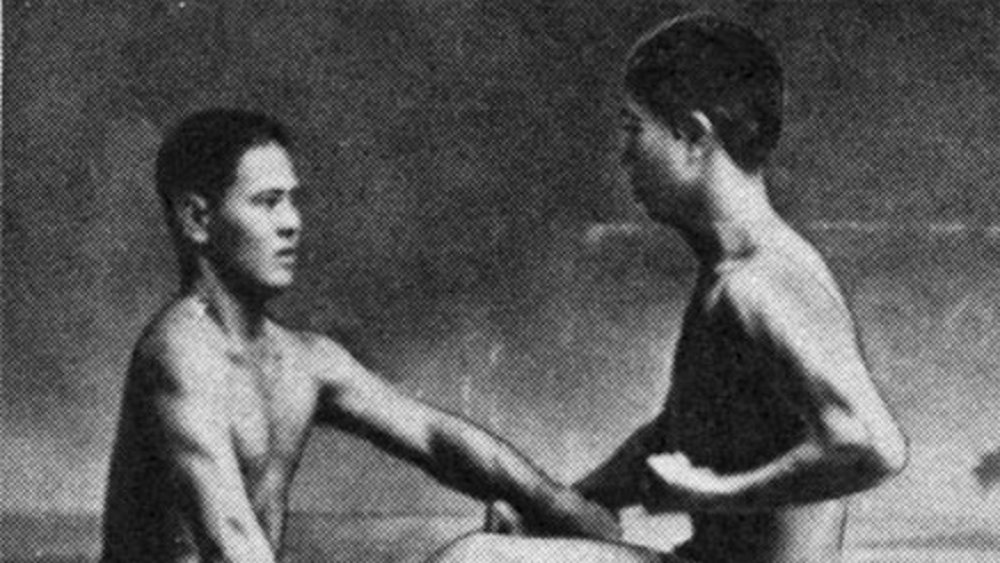The Real-Life Story Of Chojun Miyagi, Inspiration For The Karate Kid
"No such thing as bad student, only bad teacher. Teacher say, student do." – Mr. Miyagi
Broken English aside, there's a lot of wisdom to be found in the sayings and character of Mr. Miyagi from the Karate Kid movies of the 1980s and '90s. Mr. Miyagi (Noriyuki "Pat" Morita) was both a role model and teacher to Daniel LaRusso (Ralph Macchio), as well as exemplar of patience, insight, and compassion to a generation of kids who otherwise might have gotten a very different first impression of the martial arts. Japanese-American Noriyuki "Pat" Morita's turn as the Okinawan-born karate master almost didn't happen, as producer Jerry Weintraub was completely opposed to casting Morita in the role, since Morita was primarily a comedian up to that point, as Morita himself explains in an interview with the Television Academy. And now, it's difficult to imagine anyone else waxing (on or off) poetic in a voice other than Morita's low rasp.
As it turns out, though, there was a real-life inspiration for Mr. Miyagi, and he even had the same last name: Miyagi. Born in Naha, Okinawa in 1888, Chojun Miyagi, as outlined on People Pill, started training in the martial arts at age 14 under Kanryo Higaonna-sensei. He traveled to Fujian Province in China to study Shaolin and Pa Kua boxing, same as his master, before traveling back to Okinawa when his master passed away. Eventually he founded a new school of karate, Goju-ryu ("hard soft style"), as described on Sporty.
There really was a Mr. Miyagi
"The principle is the peace without incident." – Mr. Miyagi (the real-life one)
As outlined in detail by Milos, Chojun Miyagi was born to a wealthy family who worked in the important/export business and made regular trips to China. He was actually born with a different first name, Matsu, which was changed after his father passed away when he was 5. From an early age, Miyagi demonstrated an aptitude for karate, specifically the Naha-te style of his master, upon which he partially based his own Goju-ryu style. While at Fuzhou Shaolin Temple, Miyagi paid close attention to the monk's Rokkishu (hand exercises, rather than full sequences of kata). There were circular movements in the rotation of the forearms and wrists that Miyagi adopted into his teachings and used to develop his own, unique combat forms.
When Miyagi returned to Japan his reputation grew, and he is often credited with being one of the first to introduce karate to the West, as described by the Spokane Karate Center. He began training Okinawan police in karate, and his style of karate received its name in 1930 after one of his students participated in a martial arts festival, as Brisbane Goju Karate states. The following year, 1931, he went to mainland Japan and spread his brand of martial arts through various universities. In 1933, the martial arts organization Dai Nippon Butoku Kai ("Greater Japan Martial Virtue Society") officially recognized Goju-ryu as a style of karate.

